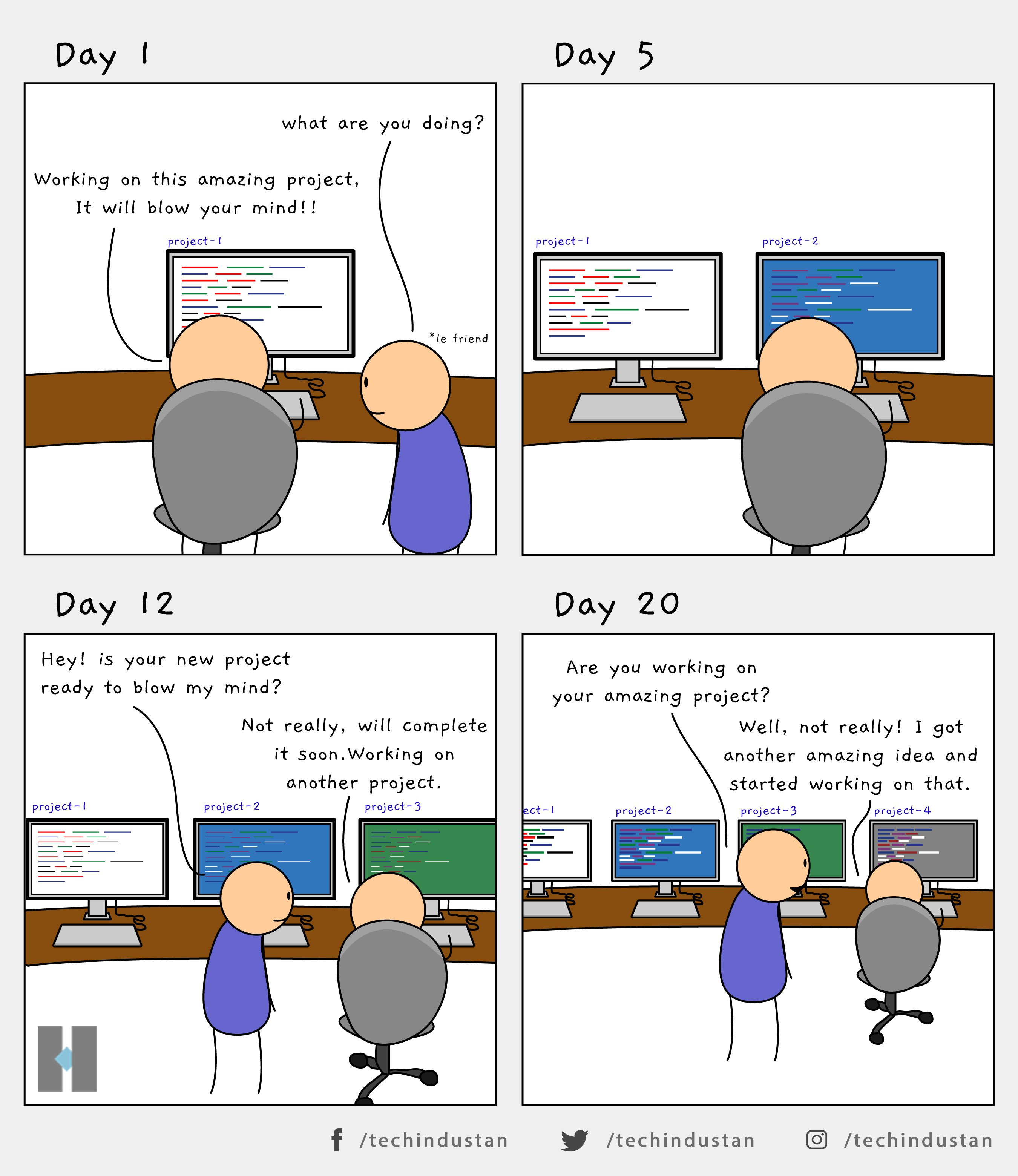Actively think about the way you want to reach your target by dividing your project in smaller, yet functional parts.
Before moving pell-mell into a new project, even a private one, write down what you want to accomplish, what’s most important and what can possibly be neglected. Reflect on your possibilities and limitations concerning experience, personal capabilities, tools, space, spare time, money, preferences, help and everything that could possibly interfere with your intermediary goals. Do not forget, that learning is an accomplishment in itself. It’s totally legitimate to define the possession of a new capability as part of your project.
After you’ve identified all the constraints and potentials, seriously review your decision to start a project. Otherwise you are never going to finish it and instead start a few others. These projects will eventually suffer the same fate. Instead, focus on one project and always have your sub-ordinate goal in mind. Talk about your ideas and how you want to reach your targets. External advice is always helpful. I can tell you from my own experience: unfinished projects are demotivating. A professional approach may help you identifying and realizing realistic projects.

I started by brainstorming an unsystematic list of possible features and requirements for the device I had in mind:
- multi functional device with many applications
- intuitively usable by a two-year old
- kid should be able to learn something when using the device
- easy interaction with real-world objects
- wireless connections (WIFI, bluetooth, infrared)
- controllable via smartphone
- learn to use new tools and software while building the device
- open source
- simple
- possibility to only use part of the whole project and still have a good product
- available for others to copy
- USB support
- colorful LEDs
- large physical buttons
- generic extension (game controllers, cranks, buttons, switches, light sensors, lights, motors, etc)
- cheap cheap cheap
- multiple hours of operation without charging
- high quality sound
- IMU
- self-sustained
- child-friendly
- rugged
- games
- safe
- easy programming
- good software support by communities
- use widespread tools and software
- find others who want to participate
Afterwards I prioritized these items and began to think about the device’s outer appearance. I also drew a few design ideas. Some electronic components that I had lying around on my workbench were hooked up. By doing that, I was able to evaluate my ideas and widen my view. A few of the bullet points from the upper list were added at that stage.
Only then I kind of knew what my ideas were really worth and if I was able to carry out the project. I came to the conclusion that it should be possible, because I knew my capabilities:
- The electronic prototyping went well.
- Others liked my ideas and encouraged me to go on.
- I’m familiar with an online CAD software called Onshape and know its most basic features.
- My 3D printer is bored the whole day long.
- A few years ago I designed and manufactured an unprofessional PCB. I should be able to repeat that, improve my skills and get even better results.
- My shelfs are full of electronic tools and equipment.
- I’ve used a soldering iron in the past and it went okay.
- I should be able to write at least some proof of concept software that works for the beginning.
- The project is much bigger than I first thought, but I have some more spare time when my second daughter will be born.
This whole exploration phase actually took a few days and consisted of multiple stages. I was pretty confident that I could implement at least half of my ideas within the given time slot.
But before I even considered starting such a time consuming activity, I had know what the market had to offer so that I don’t waste my time.